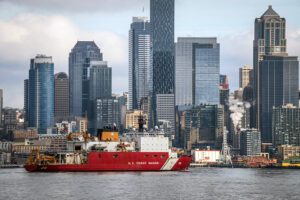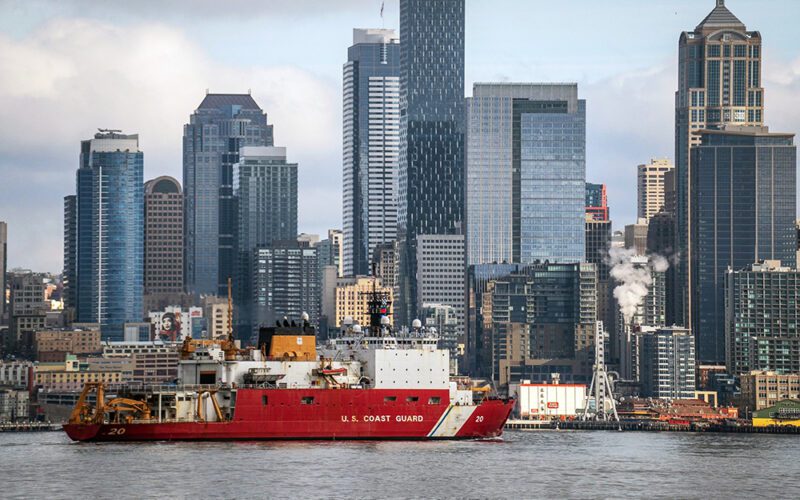
The Coast Guard cutter Healy and a team of researchers have embarked on a months-long mission to gain insight on how warmer water from the Atlantic Ocean is being introduced into the Arctic at the shelf water level, deep basin interior and upper ocean.
The mission was announced by the U.S. Coast Guard on Aug. 26.
According to the USCG, researchers from the National Science Foundation and International Arctic Research Center will service the Nansen and Amundsen Basins Observational System (NABOS), in hopes of developing an understanding of water circulation in the region and will sample the water column in areas normally inaccessible due to pack ice.
Research findings would be of interest to the Crab Plan Team of the North Pacific Fishery Management Council, which has ongoing studies on the impact of warming ocean waters and other factors in the demise of shellfish fisheries.
The overall objective of the mission is to recover, service and deploy nine long-term subsurface mooring arrays, stretching from the Eurasian Basin to the East Siberian Sea.
NABOS project lead Igor Polyakov said the Siberian Arctic, one of the regions where changes in sea ice and ocean are currently most noticeable, is one of the least observed, making this cruise crucial for creation of a trustworthy observing and forecasting system.
Polyakov, the expedition’s chief scientist, is a professor at the University of Alaska Fairbanks’ Department of Atmospheric Sciences.
In July and August, the Healy collaborated with the Office of Naval Research (ONR), deploying and servicing instruments for ONR’s Arctic Mobile Observing System (AMOS) in the Beaufort Sea. The cutter and research teams completed a number of science stations, including mooring very low frequency acoustic devices to the sea floor, deploying subsurface gliders and conducting science equipment installations on ice floes.
Since 2002, the NABOS project goal has been to gain understanding of the circulation and the transformation of Atlantic waters into the Arctic Ocean. Missions from 2021 through 2025 are directed at quantifying the freshwater introductions and their impact on the transportation of heat from Atlantic waters into the region.
Information from the observations is expected to help inform scientists and the public on potential impacts to Arctic sea-ice coverage and marine ecosystems and the expanding impact on mid-latitudes.
To accomplish its goals, NOBOS relies on international partnerships, researchers with diverse backgrounds and assets like the Healy, Coast Guard officials said.

